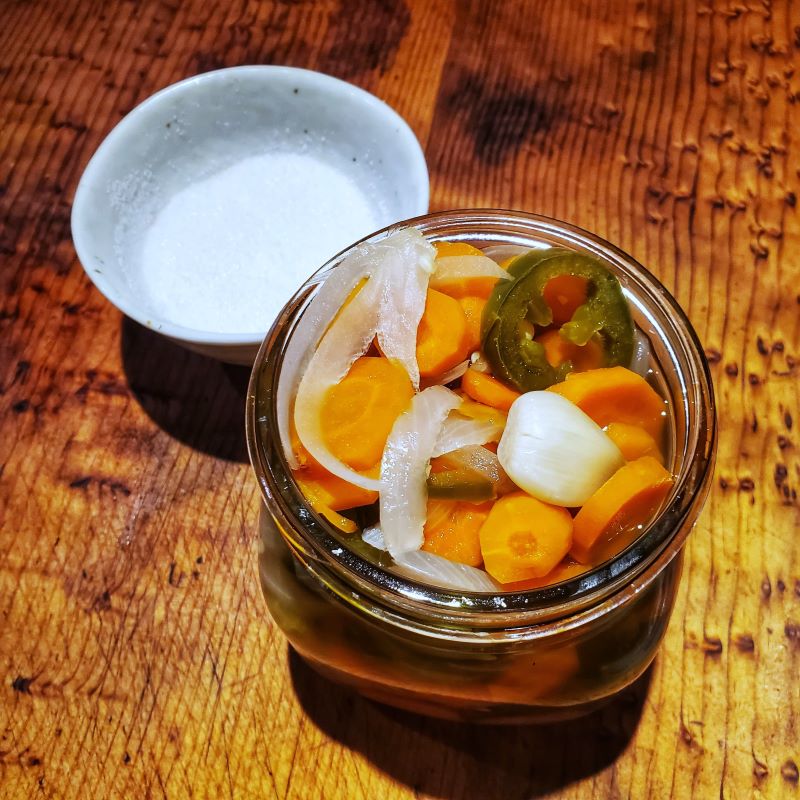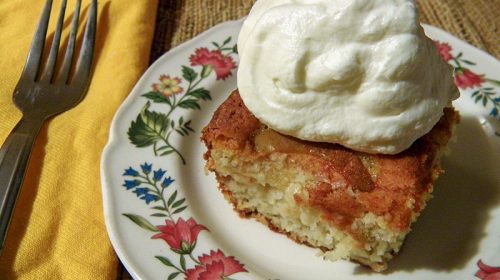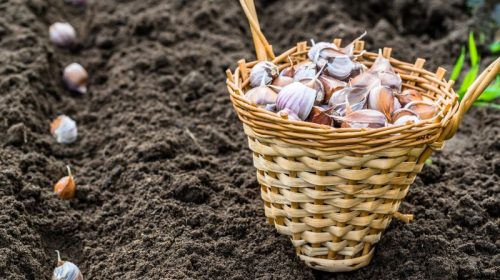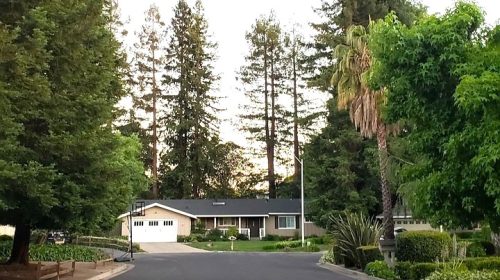Taqueria Style Fermented Carrots
By Thomas Andersen
My family frequents a local Mexican restaurant where the food is delicious and plentiful. But the capper is in the condiments, especially the pickled spicy carrot/jalapeno/onion medley. They won’t sell me jars of the stuff, and loading up on the little to-go cups is just not right. So, I made my own. A brief search through grandma’s cookbooks and away we go.
Now, I’m sure that the restaurant’s recipe is a vinegar-based “quick pickle,” not a fermented pickle like those from grandma’s book. Traditional pickles are fermented in a salty brine that discourages bad bacteria and encourages the good ones, leaving behind that wonderfully tangy pickle taste. My grandma, and probably yours, called it pickling. Today people call it lacto-fermenting – fancy name, same recipe. Lactic acid-producing bacteria preserve and protect the food and give it a classic sour taste. These bacteria occur naturally on all kinds of food – fruits, vegetables, milk, and meat. They do their best work in the absence of air, so it is essential to keep the pickling product covered in brine.
Pickling is a very old preservation method, going back thousands of years and spanning the globe. Besides the choice of food to be fermented, there are only four other necessities. (1) a clean watertight non-metallic container. (2) some way to keep the food under the brine. (3) clean water that has not been chlorinated or otherwise contaminated. (4) salt. Plain salt, no iodine or anti-caking. Go with pickling salt, which is cheap and easy and allows consistent measurement.
I make little batches, so I used wide-mouth pint jars. They don’t have to be store-bought canning jars unless you plan on pressure-canning the finished product. To hold the food under the brine, I have a few glass pickle weights made by Mason™, but a zipper plastic sandwich bag filled with unchlorinated water works fine.
Directions
Clean a few wide-mouth pint jars well. Wash and peel a big handful of carrots. Cut them into links about an inch and a half shorter than the jar then into sticks. Or slice them into disks about ⅛” thick. Slice up one and a half medium onions, three cloves of garlic, and one jalapeno pepper deveined and seeded per jar. Stuff each jar snug but not smashed with the ingredients. Variations: add oregano, bay leaves, or peppercorns.
Make a brine of 3 tbsp salt to about 1 quart of water. Add enough brine to each jar to cover the food inside but keep the liquid about an inch from the top. Use a table knife to stir out as many air bubbles as possible.
Pickle jar weights are self-explanatory. For zipper bag weights, open the bag, place it in the jar, and fill the bag with water to the top of the jar. While squeezing out the air, zip it up. Very lightly screw the top on so that the natural CO2 gasses that occur during the fermentation process can escape.

Put your jar in a warm, dark place. It should start to bubble in a day or two. After a week or so it’s worth a check. Open it up and look for anything bad. White puffy stuff is usually excess yeast. No problem: scoop it off. Hairy or colored mold is not good. Smelling like pickles is good. Anything else is not. When in doubt, throw it out. If all is well, taste a piece. If it’s what you want, move the jar to a cold place to slow or stop the fermentation. If your pickles are not yet strong tasting enough, leave the jar alone and check back later.
When they’re done, some people pressure-can them. If you do, you’ll surely kill off all the probiotics. If you don’t, just keep them in a cold dark spot and check on them once in a while. Remember the food must remain entirely covered or it will mold for sure. I’ve been told this stuff can last years. If that’s the case, you made too much. Give some away or trade for something – like sourdough starter. Hmm. A subject for next time.
Tom Andersen is a lifelong Felton resident, writer, woodworker, martial arts instructor, fermenter, and forager. He is writing a book on his family’s recipes dating back to the early 1900s.
The San Lorenzo Valley Post is your essential guide to life in the Santa Cruz Mountains. We're dedicated to delivering the latest news, events, and stories that matter to our community. From local government to schools, from environmental issues to the arts, we're committed to providing comprehensive and unbiased coverage. We believe in the power of community journalism and strive to be a platform for diverse voices.





